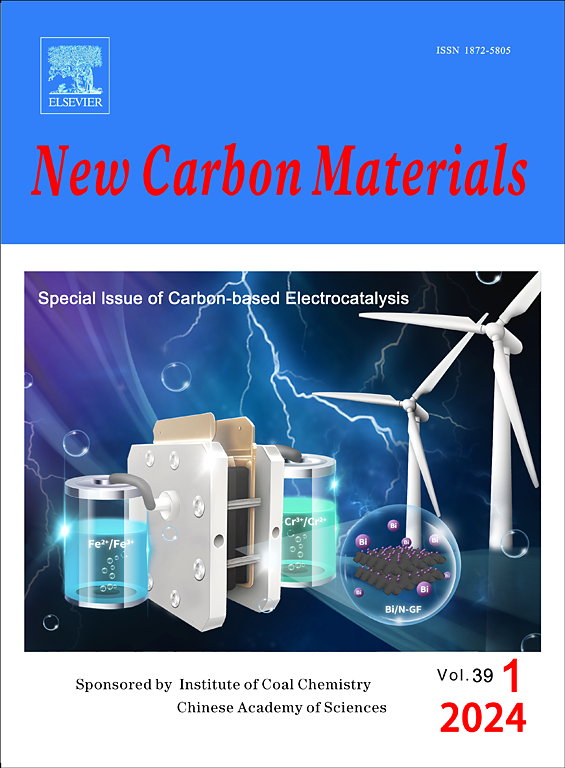超级电容器的高频性能与碳电极中的掺氮类型之间的关系
IF 5.7
3区 材料科学
Q2 Materials Science
引用次数: 0
摘要
掺氮已被广泛用于提高超级电容器中碳电极的性能,尤其是在高频响应方面。然而,不同氮掺杂物在高频下的电荷存储和电解质离子响应机制仍不清楚。本研究通过梯度碳化法形成了具有不同表面掺氮构型的三聚氰胺泡沫碳,并分析了不同构型对超级电容器高频响应行为的影响。通过实验和第一原理计算相结合的方法,我们发现吡咯烷酮 N 具有较高的吸附能,可提高电极在高频下的电荷存储容量。另一方面,吸附能较低的石墨化 N 可提高离子响应速度。我们建议将吸附能作为高频应用中电极/电解质设计的实用描述指标,为提高超级电容器中掺杂 N 的碳材料的性能提供更通用的方法。本文章由计算机程序翻译,如有差异,请以英文原文为准。
The relationship between the high-frequency performance of supercapacitors and the type of doped nitrogen in the carbon electrode
Nitrogen doping has been widely used to improve the performance of carbon electrodes in supercapacitors, particularly in terms of their high-frequency response. However, the charge storage and electrolyte ion response mechanisms of different nitrogen dopants at high frequencies are still unclear. In this study, melamine foam carbons with different configurations of surface-doped N were formed by gradient carbonization, and the effects of the configurations on the high-frequency response behavior of the supercapacitors were analyzed. Using a combination of experiments and first-principle calculations, we found that pyrrolic N, characterized by a higher adsorption energy, increases the charge storage capacity of the electrode at high frequencies. On the other hand, graphitic N, with a lower adsorption energy, increases the speed of ion response. We propose the use of adsorption energy as a practical descriptor for electrode/electrolyte design in high-frequency applications, offering a more universal approach for improving the performance of N-doped carbon materials in supercapacitors
求助全文
通过发布文献求助,成功后即可免费获取论文全文。
去求助
来源期刊

New Carbon Materials
MATERIALS SCIENCE, MULTIDISCIPLINARY-
CiteScore
6.10
自引率
8.80%
发文量
3245
审稿时长
5.5 months
期刊介绍:
New Carbon Materials is a scholarly journal that publishes original research papers focusing on the physics, chemistry, and technology of organic substances that serve as precursors for creating carbonaceous solids with aromatic or tetrahedral bonding. The scope of materials covered by the journal extends from diamond and graphite to a variety of forms including chars, semicokes, mesophase substances, carbons, carbon fibers, carbynes, fullerenes, and carbon nanotubes. The journal's objective is to showcase the latest research findings and advancements in the areas of formation, structure, properties, behaviors, and technological applications of carbon materials. Additionally, the journal includes papers on the secondary production of new carbon and composite materials, such as carbon-carbon composites, derived from the aforementioned carbons. Research papers on organic substances will be considered for publication only if they have a direct relevance to the resulting carbon materials.
 求助内容:
求助内容: 应助结果提醒方式:
应助结果提醒方式:


